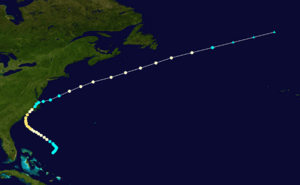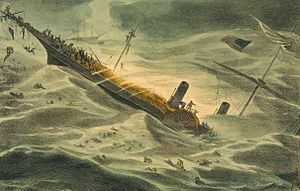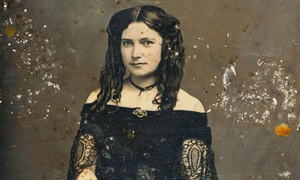SS Central America facts for kids
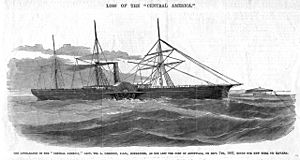 |
|
Quick facts for kids History |
|
|---|---|
| Name | Central America |
| Operator | United States Mail Steamship Company |
| Builder | Webb yard |
| Launched | October 1852 |
| Fate | Sank September 12, 1857 |
| General characteristics | |
| Tonnage | 2,141 long tons (2,175 t) |
| Length | 278 ft (85 m) |
| Beam | 40 ft (12 m) |
| Crew | Captain William Lewis Herndon First Officer Charles W. van Rensselaer |
The SS Central America, often called the Ship of Gold, was a large steamship that sailed between Central America and the eastern United States in the 1850s. This impressive ship was about 280 feet (85 meters) long and used big paddle wheels on its sides to move through the water. It was first named the SS George Law. In September 1857, the Central America was caught in a terrible hurricane. The ship sank, and sadly, 425 of the 578 people on board lost their lives. It also carried a huge amount of gold, about 30,000 pounds (13,600 kg), which was being brought from the California Gold Rush. The loss of this gold contributed to a big economic problem in the United States called the Panic of 1857.
Contents
The Great Storm and Sinking
On September 3, 1857, the Central America began a journey from Aspinwall (now Colón, Panama) to New York City. Captain William Lewis Herndon was in command, with 477 passengers and 101 crew members on board. The ship was carrying a massive amount of gold, about 10 short tons, which had been found during the exciting California Gold Rush. After a brief stop in Havana, Cuba, the ship continued its voyage north.
Caught in a Hurricane
On September 9, 1857, the Central America sailed into a powerful Category 2 hurricane off the coast of the Carolinas. The storm was incredibly strong. By September 11, the winds, blowing at about 105 miles per hour (169 km/h), had ripped the ship's sails to shreds. Huge waves crashed over the deck, and the ship began taking on water. A critical leak developed where a paddle wheel shaft met the ship's side, making the situation even worse.
A Desperate Fight
By noon on September 11, the ship's boiler, which powered the vessel, could no longer keep its fire going. The steam pressure dropped, causing the bilge pumps, which removed water from the ship, to stop working. Without power, the paddle wheels also failed. This meant the ship could no longer steer into the wind, and it began to sink by its back end. The people on board bravely raised the ship's flag upside down, a sign of extreme distress, hoping to signal any passing ships. Sadly, no help arrived.
The Final Moments
Passengers and crew formed a "bucket brigade," working tirelessly through the night to bail water out of the ship. It was a brave but losing battle. During a brief calm in the hurricane's eye, they tried to restart the boiler, but it was too damaged. Then, the second part of the storm hit with renewed fury. The ship was now helpless, tossed by the powerful winds and waves.
On the morning of September 12, a glimmer of hope appeared: two ships were spotted, including a brig named Marine. Lifeboats were launched, and about 100 passengers, mostly women and children, were safely transferred. However, the Central America was still in the most dangerous part of the storm. The strong winds and heavy seas pulled the ship and many of its people away from the rescuers. At 8:00 that evening, the Central America finally sank. Tragically, 425 lives were lost. Later, a Norwegian ship called the Ellen rescued 50 more people from the water. Three additional survivors were found in a lifeboat more than a week later.
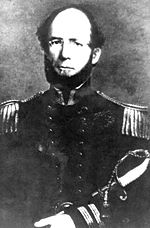
After the Disaster
After the sinking, people were shocked by the terrible loss of life. It was considered one of the worst American shipping disasters ever. The Central America was carrying gold worth about $8 million at the time. Today, that gold would be worth around $765 million! The loss of this huge treasure, along with the ship itself (valued at $140,000), had a major impact on the economy, contributing to the Panic of 1857.
A Heroic Captain
Captain William Lewis Herndon was a brave and respected officer. He had served in the Mexican–American War and even explored the Amazon Valley. Captain Herndon stayed with his ship as it sank, showing great courage. To honor him, two ships in the U.S. Navy were later named USS Herndon. A town in Virginia, Herndon, Virginia, was also named after him. Interestingly, his daughter, Ellen, later married Chester Alan Arthur, who became the 21st President of the United States.
Finding the Lost Treasure
For over a century, the Central America and its treasure lay hidden deep beneath the ocean.
The Discovery Expedition
In 1988, a team called the Columbus-America Discovery Group, led by Tommy Gregory Thompson, finally located the shipwreck. They used advanced search methods and sent a special underwater robot, called a remotely operated vehicle (ROV), to explore the wreck on September 11, 1988. This ROV helped bring many valuable items and a lot of gold to the surface.
Amazing Artifacts Recovered
The recovered gold was estimated to be worth between $100 and $150 million. One large gold bar, weighing 80 pounds (36 kg), was sold for a record $8 million! It was considered the most valuable piece of currency in the world at that time. Among the many fascinating items found was a rare photograph, called a daguerreotype, of a young woman. It's often called the "Mona Lisa of the Depths."
Continuing the Exploration
In March 2014, another company, Odyssey Marine Exploration, was hired to continue exploring the shipwreck. The first expedition had only explored about 5 percent of the ship. Since then, more gold and silver coins from the Central America have been shown to the public. For example, a large gold bar weighing 174 ounces (about 4.9 kg) was sold at auction in 2019 for $528,000.
The Ship's Bell Finds a New Home
One very special item found in the wreck in 1988 was the ship's bell. It weighs 268 pounds (122 kg) and is over 2 feet (0.6 meters) tall. The bell has "MORGAN IRON WORKS" and "NEW YORK 1853" carved into it. This historic bell was displayed in several museums and events over the years. In August 2021, it was given as a gift to the United States Naval Academy in Annapolis, Maryland. The Navy accepted this important gift. On May 23, 2022, the bell was placed next to the Herndon Monument at the Academy, honoring Captain Herndon and the ship's legacy.
See also
 In Spanish: SS Central America para niños
In Spanish: SS Central America para niños
- Nuestra Señora de Atocha (1622)
- SS Georgiana (1865)
- SS Republic (1865)
- RMS Republic (1903)


